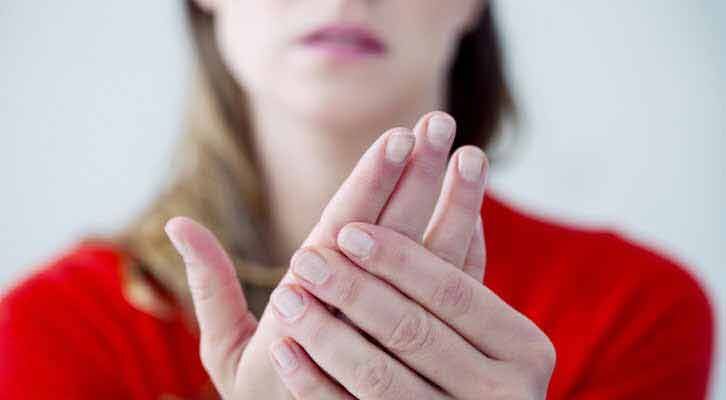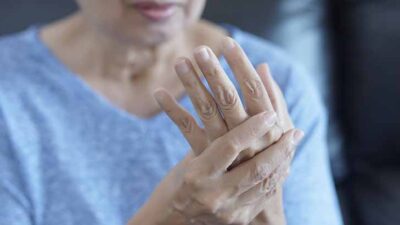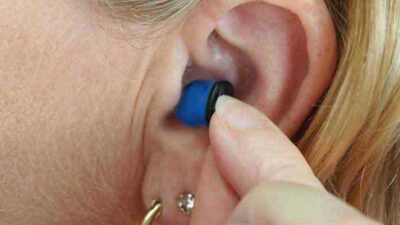Arthritis is a term used to describe over 200 different diagnosable diseases in the human body. These diseases all tend to affect joints in the body – some arthritis diseases have been linked to specific joints, while others can affect any joint in the body.
Gonococcal arthritis is one of the rarer arthritis types and can lead to life-threatening symptoms when it goes untreated. The disease is found in patients diagnosed with gonorrhea, which is a sexually transmitted disease caused by the Neisseria gonorrhoeae bacterium species.
In some cases, especially amongst women, symptoms of gonococcal arthritis may be mild, but the symptoms of this disease can also be severe in some cases.
Unfortunately, there are many cases where symptoms are only present once complications have developed; thus education about all symptoms related to this disease is essential to ensure its early diagnosis.
People also ask
Q. What vitamins are good for arthritis pain?
A. Nutritional deficiencies are common in arthritis sufferers which are why doctors often recommend their arthritis patient to take dietary supplements containing these nutrients to ease joint pain.. https://www.jointhealthmagazine.com/vitamins-for-arthritis-joint-pain.html
Q. What is Turmeric Curcumin Plus?
A. Turmeric Curcumin Plus is a natural dietary supplement, formulated to aid in boosting joint health and function. Its formulated from Turmeric, which is Super food and it functions well in boosting the general health and wellness of the consumer. https://www.jointhealthmagazine.com/turmeric-plus-review.html
Q. What supplement works best for joint pain?
A. Some consequences of aging – those grey hairs and crow’s feet, for instance – merely change the way we look. As we age on the outside, our joints and ligaments also get older, which often leads to joint pain. And unlike changes to our skin and hair..https://www.jointhealthmagazine.com/jointrelief
Q. How much glucosamine do I need?
A. Arthritis is a very common problem among the Americans. According to the statistics, around 22.7% of the American adults are diagnosed with some forms of arthritis, such as gout, lupus, rheumatoid arthritis, and others..https://www.jointhealthmagazine.com/whats-the-best-glucosamine-dont-take-the-wrong-kind.html
Q. What is the main cause of arthritis?
A. Arthritis is a condition that affects the body’s musculoskeletal system, mainly the joints. It’s reported that this condition is the main reason for disability among people over the age of 55 in the western countries..https://www.jointhealthmagazine.com/causes-of-arthritis.html
Q. What are the side effects of taking Omega XL?
A. Omega XL is a dietary supplement that is designed to help people with painful joints. The products is advertised as a natural supplement that uses handpicked ingredients. According to the producers..https://www.jointhealthmagazine.com/omega-xl.html
Q. Can allergies cause body aches?
A. Rarely do people associate joint pain with allergies. The truth however is that when allergies cause inflammation, joint pains are inevitable. Well, let’s first try to understand what allergies are .The Meaning of Allergies..https://www.jointhealthmagazine.com/how-is-joint-pain-tied-to-allergies.html
Q. What causes pain in the finger joints?
A. Imagine your fingers aching every time you use them. That could be awful. You cannot push a key on your laptop, complete a message on your Android phone, hit those guitar chords, thoroughly and thoroughly clean your body or the plate you used last night..https://www.jointhealthmagazine.com/finger-joint-pain.html
Q. What is in vital 3?
A. Vital 3 is a natural joint supplement that is sold and marketed to promote healthy joint muscles and at the same time to promote joint comfort and improve joint lubrication. As a long term joint care ingredient, this product is touted to work within the first six weeks..https://www.jointhealthmagazine.com/vital-3.html
Two Types Of Gonococcal Arthritis
Gonococcal arthritis can be present in two different forms, each with its own characteristics, risk factors, complications and symptoms. It is important to know the difference between these two forms of gonococcal arthritis in order to determine which may be present in a patient experiencing symptoms.
1. Bacteremic Gonococcal Arthritis
The most common type of this arthritis is its bacteremic form, also called gonococcal bacteremia or arthritis-dermatitis syndrome. Bacteremic gonococcal arthritis tend to present symptoms approximately three to five days before a patient will be officially diagnosed with the disease.
Note that this form of gonococcal arthritis tend to affect the extremities of the upper body more than the lower body, and resolves on its own in up to 40% of cases.
Unresolved and untreated, this type of gonococcal arthritis can spread to a joint and cause a septic arthritis infection in one or multiple joints throughout the patient’s body. Bacteremic gonococcal arthritis accounts for 60% of all cases where gonococcal arthritis is diagnosed.
2. Septic Gonococcal Arthritis
Septic gonococcal arthritis refers to a condition where the gonococcal arthritis has spread to a joint or multiple joints and caused an infection to grow within the affected joints.
This type of gonococcal arthritis can affect any part of the body where joints are located and, unlike bacteremic gonococcal arthritis, is not more likely to affect the upper body’s extremities than the lower body’s extremities.
Septic gonococcal arthritis is most commonly found to infect the elbow joints, the ankle joints, wrist joints and the knee joints. Septic gonococcal arthritis accounts for 40% of gonococcal arthritis cases.
Causes Of Gonococcal Arthritis

There is only one particular cause of gonococcal arthritis, which is why the disease is only found amongst patients who have developed gonorrhea.
It is the Neisseria gonorrhoeae that causes the sexually transmitted disease gonorrhea[1], which may then cause gonococcal arthritis to develop. For this reason, it is more appropriate to consider the causes of gonorrhea[2] than to consider the causes of gonococcal arthritis.
As mentioned, the disease is a sexually transmitted infection; thus sexual interaction between two individuals is required for the bacteria spread from an infected individual to a person who has not yet been infected by the bacteria.
Note that this disease does not only spread through penis to vaginal intercourse, but can also be spread through the anus and mouth.
Symptoms Of Gonococcal Arthritis
A concerning problem that gonococcal arthritis poses is the fact that the disease does not always cause symptoms to appear at an early stage.
In such a case, symptoms may only start to appear once the disease has spread to a joint and caused an infection to develop within the affected joints – more than one joint can also be affected at the same time. Furthermore, it is also important to know that the symptoms presented by the two different types of gonococcal arthritis are not always the same.
As mentioned earlier, when a patient develops bacteremic gonococcal arthritis, they are likely to experience physical symptoms in the extremities located in their upper body. The larger joints in the body are more likely to be affected, such as the wrist.
The joints located in the knees and ankles are also at a risk of being affected by this form of gonococcal arthritis. Bacteremic gonococcal arthritis can also result in rashes.
The bacterium species may start to spread through the affected patient’s bloodstream. When this occurs, the patient will be at a high risk of developing the second, less common type of gonococcal arthritis, which is the septic form of the disease.
In such a case, the bacteria present in the patient’s bloodstream will attach to joints and cause an infection to develop. In many cases, only one joint in the body is affected, but there are times when more than a single joint in a patient’s body is affected and develops an infection.
There are some common symptoms that can help a patient identify the presence of gonococcal arthritis. Sexually active patients are advised to look out for these common symptoms to help them identify the presence of the bacteria in their bodies at an early stage, which can ensure a more successful outcome.
These Common Symptoms May Include:

- The development of a fever.
- Pain in the lower abdominal area – this symptoms[3] can be especially severe in some cases.
- Joint pain – Pain may be experienced in a single joint or in multiple joints, and usually lasts for around one to four days.
- Tendon inflammation, which causes the patient to experience pain in their wrists and in their hands.
- During urination, a burning sensation may be experienced. It is also not uncommon for a patient to experience painful urination.
- A rash may develop on the patient’s skin. Such a rash usually contains slightly raised sores that can be pink or red in color. The sores may become purple or develop pus on the inside.
Diagnosis Of Gonococcal Arthritis

When a patient is suspected of gonococcal arthritis, a healthcare provider will start by asking them about what symptoms they are experiencing and perform a physical examination. Thereafter, certain tests need to be conducted in order to determine whether the Neisseria gonorrhoeae bacterium species is present in the patient’s body.
There are different types of tests that may be conducted to determine whether the patient has gonorrhea or gonococcal arthritis and, should gonococcal arthritis be the suspectable, which type of this disease the patient has.
Several samples of body material may be taken to perform these tests, including joint fluids and stool samples.
Once the appropriate body material samples have been collected, a healthcare provider may request several tests to be performed, such as a joint aspirate culture test, cervical gram stain test, a gram stain test of the joint fluid and a throat culture. The healthcare providers will also most likely request a urine sample from the patient to test for gonorrhea.
Treatment Of Gonococcal Arthritis
It is very important to note that both gonorrhea and gonococcal arthritis need to be treated as the bacterium species that causes these conditions as the bacteria can spread and cause infection throughout the body and lead to serious symptoms.
Gonorrhea also spreads quite easily when a person comes into contact with another that has the bacteria; thus treatment is not only required to prevent further symptoms and infection, but also to reduce the risk of further spreading the bacteria to other sexual partners.
Treatment of gonorrhea and gonococcal arthritis is done in two steps. During the first step, the patient who has been infected by the bacteria needs to treated in order to destroy the bacteria and cure them of their condition.
Once the infected patient has been treated and cured successfully, the healthcare provider that has treated the patient also needs to request the contact details of the patient’s most recent sexual partners.
These individuals then needs to be contacted and tested for the Neisseria gonorrhoeae bacteria species and, should the bacteria be present in them, they will need to be treated.
The most appropriate treatment for gonococcal arthritis[4] is antibiotic therapy. When this type of arthritis is suspected, antibiotic therapy may be started before test results have been returned to avoid the infection from spreading further and affecting more joints.
The treatment options administered and the type of antibiotic therapy provided to a patient depends on the type of gonococcal arthritis they have and the severity of their symptoms.
In the case of septic gonococcal arthritis, where the bacteria has caused an infection in the patient’s joints, intravenous administration of antibiotics are most often the preferred option to ensure the disease is attended to quickly and the bacteria can be destroyed more effectively.
Thus, intravenous antibiotic therapy may be administered during the first two or three weeks. After this period, the patient may be placed on oral antibiotic therapy for a further two to four weeks. A common type of antibiotic that is used to treat gonococcal arthritis is cefotaxime.
Should a resistance be suspected, then vancomycin or teicoplanin could be used instead to ensure the infection can be treated effectively.
Note that the condition should start to clear up within the first five days of antibiotic therapy. Should no positive results be experienced within the first five days, then the condition may be complicated and a reassessment of the treatment plan should be considered.
In such a case, further tests may be performed. A stronger dose of antibiotics or a different type of antibiotics may then be provided to the patient.
It is also important to note that there have been more severe cases of gonococcal arthritis where antibiotic therapy alone did not pose as an effective treatment option. In such a case, additional treatment measures need to be taken, in which cases the options is often somewhat invasive.
This usually includes joint drainage, where different options can be utilized to drain the infection from the affected joints.
Usually percutaneous aspiration is utilized or ultrasound-guided needle aspiration in cases where the joints affected includes the shoulder joints, sacroiliac joints or the hip joints. Surgical drainage is also an option that is utilized in some rare cases.
While gonococci arthritis is being treatment, a healthcare provider will recommend avoiding sexual activity for the first few days or to practice safe sex should the patient declare that they have avoided the use of condoms prior to the development of the infection.
Complications Of Gonococcal Arthritis

Untreated, gonococcal arthritis can lead to the development of additional complications[5], which will make the treatment for invasive and much more difficult for the healthcare provider. The complications that can be caused by an untreated gonococcal arthritis condition may include pelvic inflammatory disease, which is a condition where the lining of the uterus becomes infected.
The fallopian tubes and the ovaries may also be infected. This complication often causes permanent scarring in the affected areas.
In women, complications of gonococcal arthritis is especially harmful as it can cause problems with their pregnancy – even future pregnancies may be affected if they are not pregnant while they are suffering from gonococcal arthritis.
When gonococcal arthritis is not treated effectively, it can also increase the patient’s risk of obtaining HIV and AIDS later on. Another potential complication of this disease that can be unpleasant to both men and women is the fact that it can lead to infertility in both genders. New Chapter Turmeric Force obtained from the nutrients of turmeric and designed to treat arthritis.
Preventing Gonococcal Arthritis
Preventing gonorrhea and thus also gonococcal arthritis is always recommended as these diseases can lead to severe adverse reactions in the body and harmful complications. Getting tested for this disease when the symptoms associated with it is very important as the earlier it is diagnosed, the more successful and less invasive the treatment will be.
When diagnosed, it is important to practice safe sex or to avoid sexual intercourse during the treatment period. It is also important to avoid having sexual intercourse with a person that has recently been diagnosed with the disease until the infection has cleared up.
Safe sex, which refers to sexual intercourse with condoms, is usually the best way to prevent obtaining this bacteria and developing the disease. It is also recommended not to have too many sexual partners as this increases a person’s risk of obtaining the bacteria.
See More: Rheumatoid Arthritis: Signs And Symptoms, Causes, Treatment
Conclusion
Gonococcal arthritis is a rare form of arthritis that is caused by the Neisseria gonorrhoeae bacteria, which causes gonorrhea. The disease can cause numerous symptoms to develop, but does not always present itself prior to the development of complications.
Diagnosis and treatment administered by a professional healthcare provider is essential to reduce the risk for severe complications.
Treatment can be effective, especially when administered at an early stage of the disease, but prevention of this disease is the most appropriate method of treatment; thus avoiding infection of the joints.
Feature Image: Shutterstock.com
In-Post Image: Shutterstock.com & app.roshreview.com







 This article changed my life!
This article changed my life! This article was informative.
This article was informative. I have a medical question.
I have a medical question.
 This article contains incorrect information.
This article contains incorrect information. This article doesn’t have the information I’m looking for.
This article doesn’t have the information I’m looking for.